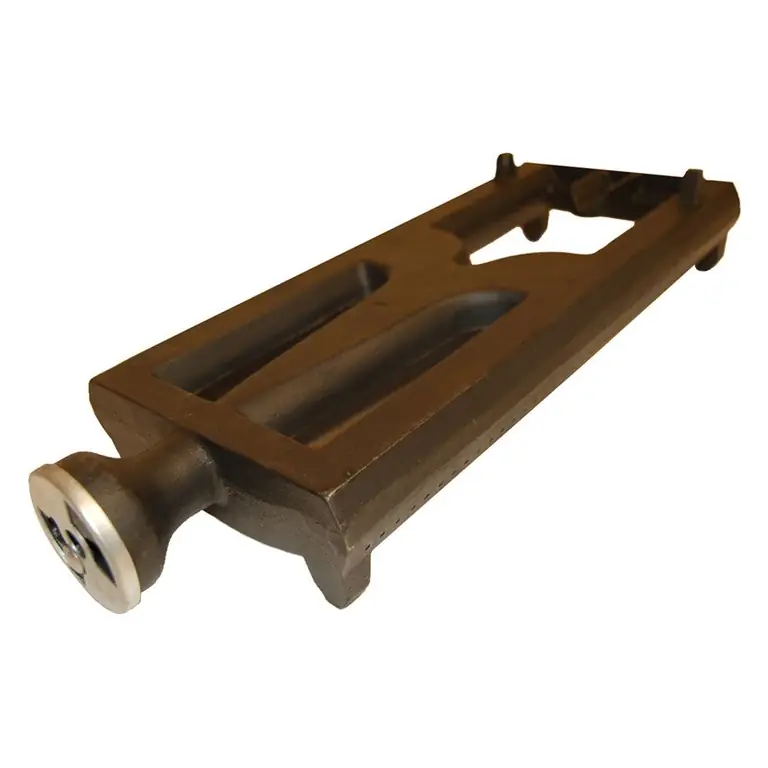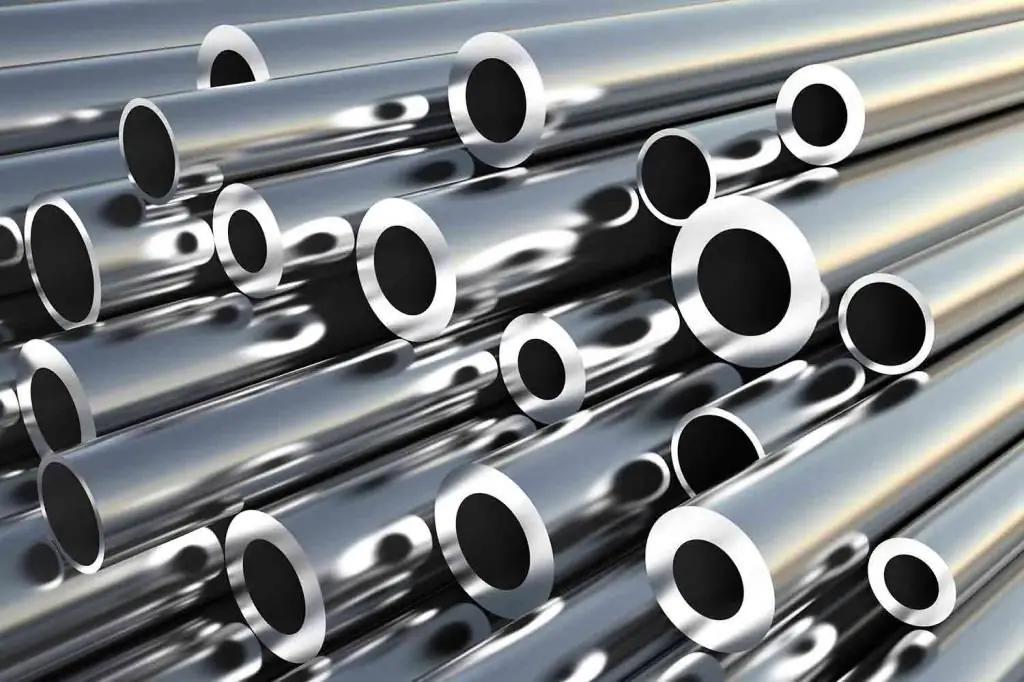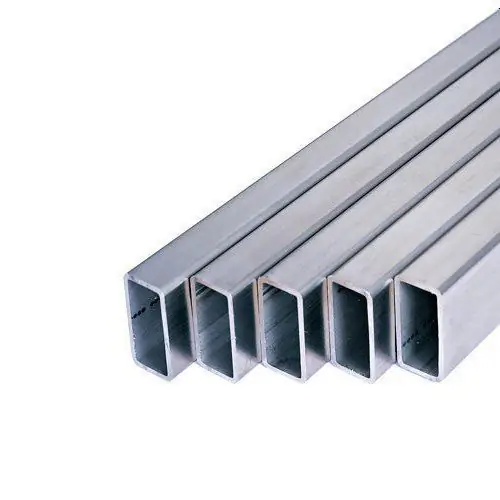2025 Author: Howard Calhoun | [email protected]. Last modified: 2025-01-24 13:10:43
It is best to start the description of this topic with tin and lead separately. Lead, tin and alloys of this material have certain properties that are due to their initial state.
General description of tin
It is important to note here that two types of this raw material are distinguished. The first type is called white tin, and it is the β-modification of this substance. The second type is the α modification, which is better known as tin gray. When moving from one modification to another, namely from white to gray, a strong change in the volume of the substance occurs, since a process such as the scattering of metal into powder occurs. This property is called tin plague. It is also important to note here that one of the most negative properties of tin is its tendency to frost. In other words, at temperatures from -20 to +30 degrees Celsius, a spontaneous transition from one state to another can begin. In addition, the transition will continue even if the temperature is increased, but after the process has begun. Because of this, raw materials have to be stored in places with rather high temperatures.

Properties of tin and lead
It is worth saying that tin,lead and alloys of these materials have very few properties in common. For example, the purer the tin, the higher the chance that it will be affected by the plague. Lead, in turn, does not undergo allotropic transformations at all.
However, it is also worth noting that additional substances are used to slow down this kind of transformation in tin. Best of all, materials such as bismuth and antimony showed themselves. The addition of these substances in a volume of 0.5% will reduce the rate of allotropic transformation to almost 0, which means that white tin can be considered completely stable. It can also be noted here that to a lesser extent, but still, an alloy of tin and lead is used for the same purpose.
If we talk about the properties of lead, then it has a higher melting point - 327 degrees Celsius than tin - 232 degrees. The density of lead at room temperature is 11.34 g/cm3.

Tin and lead characteristics
It's worth starting with the fact that the recrystallization of work-hardened tin, lead and alloys occurs at a temperature that is considered below room temperature. For this reason, their processing is hot.
The general indicator was the resistance to corrosion under atmospheric conditions. However, a slight difference lies in the resistance to corrosion under the influence of minor substances. For example, lead manifests itself best when interacting with concentrated compositions of certain acids - sulfuric, phosphoric, etc. Tin, in turn, best resists solutions fromfood acids. The scope of these substances separately is also different. Tin is widely used for tinning tin, while lead has found its way into the lining of sulfuric acid equipment.

Alloy systems
Here it is important to start with the fact that an alloy of tin and lead is an even more fusible material than separately. Such mixtures are most widely used as solders, for the manufacture of typographic fonts, for casting fuses, etc. Such a system as "tin - lead" belongs to the group of the eutectic type. An important property of all materials belonging to this category is that their melting temperature is in the region of 120 to 190 degrees Celsius. In addition, there are groups of ternary eutectics. An example is the tin-lead-zinc alloy system. The melting temperature of such materials drops even lower, and its limit is 92-96 degrees Celsius. If you add a fourth component to the alloy, then the melting temperature will drop to 70 degrees. If we talk about the use of an alloy of tin with lead as a solder, then most often up to 2% of a substance such as antimony is introduced into their composition. This is done in order to improve the flow of the solder. It is worth noting here that the melting temperature can be controlled by the "tin/lead" ratio. The most fusible raw material melts at 190 degrees.

Babbits
With the name of the alloy of tin and lead, have already figured out - it's a eutectic. This group of substances with this composition is most widely used in the production of bearing alloys, which are called "babbits". This material is used as a fill for bearing shells. The most important thing here is to choose the right material so that it can easily run in to the shaft. At first glance, it seems that the mass of tin and lead alloys with various solders is an excellent way out. However, in reality this is not entirely true. Such materials turned out to be too soft, and the coefficient of friction between the shaft and such an insert was high. In other words, during operation, they heated up too much, because of this, low-melting metals began to "stick" to the shaft. To avoid this shortcoming, a small amount of more solids began to be added. In this way, a material was obtained that is both soft and hard at the same time.

Composition of matter
In order to achieve a substance that has exactly the opposite characteristics, the following substances were used. The most important thing is that they lie immediately in the two-phase region α + β. Crystals of the β-phase are enriched with solder such as antimony. They act as solid brittle substances. The α-phase crystals, in turn, are a soft and plastic base. In order to avoid such disadvantages as the melting of solid crystals and their ascent, another component is added to the mixture - copper. SoThus, from a piece of an alloy of lead and tin with the addition of some other substances, it is possible to create a babbit bearing material that combines two opposite qualities - hardness and softness. Babbit B83 became the classic and most common product of this brand. The composition of this alloy is as follows: 83% Sn; 11% Sb; 6% Cu.

Alternative
It should be said that from the point of view of economy, tin-based babbits are very disadvantageous, since this material costs quite a lot. In addition, tin itself is considered a scarce substance. For these two reasons, alternative bearings have been developed based on lead, antimony and copper. In this composition, antimony crystals act as a solid base. The soft base is a direct alloy of lead and antimony. Copper is used here in the same way as the lead in the previous composition, that is, to prevent solid base crystals from floating up.
However, here it is worth mentioning the shortcomings. The lead/antimony eutectic is not as ductile as the tin phase. Therefore, parts made in this way suffer from rapid wear. To offset this drawback, you still have to add a certain amount of tin. The use of zinc-tin-lead ternary eutectics is not very common.
Recommended:
Name of organization: examples. What is the name of the LLC?

When a novice entrepreneur applies to the tax office for registration of an LLC, he will definitely face the need to give his company a name. A common situation is when a businessman does not think about the importance of this task, and as a result, dozens of "Stroy-services" and "Aphrodite" appear in the city
Alloy cast iron: grades, properties and applications

Alloyed iron is a material that is produced by smelting in blast furnaces. It can contain different amounts of carbon. Depending on the quantitative content of this substance, two types of cast iron are distinguished. The first is called conversion, or white, and the second is gray, or foundry
Alloy is a homogeneous composite material. Alloy properties

Everyone has heard the word "alloy", and some consider it synonymous with the term "metal". But these concepts are different. Metals are a group of characteristic chemical elements, while an alloy is a product of their combination. In its pure form, metals are practically not used, moreover, they are difficult to obtain in their pure form. While alloys are ubiquitous
Duralumin is a high-strength aluminum-based alloy with additions of copper, magnesium and manganese: properties, production and application

What is duralumin? What are the features of duralumin alloy? Technical and quality indicators of the alloy. A variety of products from this metal and their scope
AMg-alloy: characteristics and properties

The use of aluminum as a structural material has been around for a very long time. However, it was distinguished only by its low specific gravity, good ductility and high corrosion resistance. The strength and hardness of this material were extremely low. The problem was partially eliminated by Soviet scientists, who added magnesium to the composition. Thus, AMg alloys were obtained for the first time

